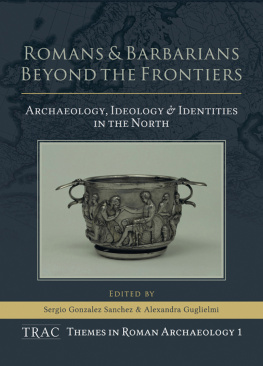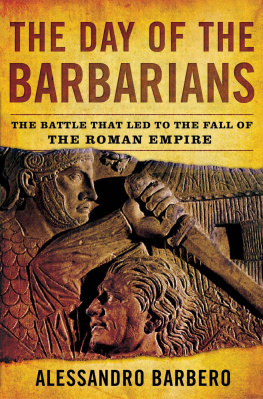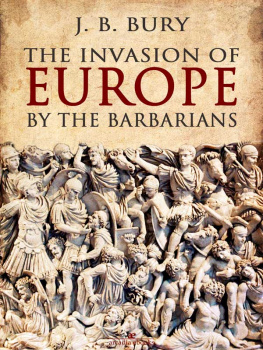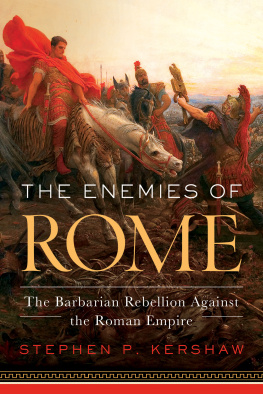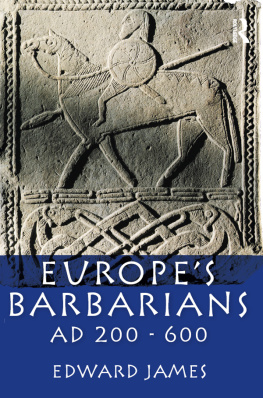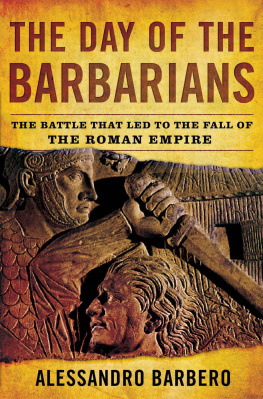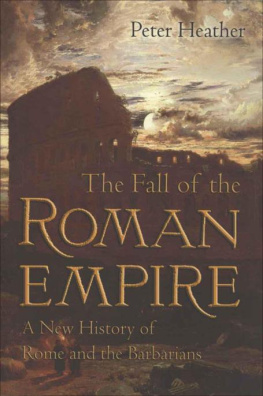Enemies of Rome
BARBARIANS THROUGH ROMAN EYES
I. M. FERRIS
To Lynne with Love
Frontispiece : Detail of the Bridgeness Legionary Distance Slab ( Photo : National Museums of Scotland )
First published in 2000 by Sutton Publishing Limited
The History Press
The Mill, Brimscombe Port
Stroud, Gloucestershire, GL5 2QG
www.thehistorypress.co.uk
This ebook edition first published in 2013
All rights reserved
I.M. Ferris, 2000, 2013
The right of I.M. Ferris to be identified as the Author of this work has been asserted in accordance with the Copyrights, Designs and Patents Act 1988.
This ebook is copyright material and must not be copied, reproduced, transferred, distributed, leased, licensed or publicly performed or used in any way except as specifically permitted in writing by the publishers, as allowed under the terms and conditions under which it was purchased or as strictly permitted by applicable copyright law. Any unauthorised distribution or use of this text may be a direct infringement of the authors and publishers rights, and those responsible may be liable in law accordingly.
EPUB ISBN 978 0 7524 9520 0
Original typesetting by The History Press
Contents
Acknowledgements
Almost inevitably, thanks and acknowledgement are due to a large number of individuals and organisations for different and various kinds of help and encouragement in writing this book.
Firstly I must thank the organisers of the Theoretical Roman Archaeology Conferences (TRAC) at Durham in 1994 and Sheffield in 1996, of the Theoretical Archaeology Group conference (TAG) at Bradford in 1995, and of the Roman Archaeology Conference (RAC) at Nottingham in 1997 for providing platforms on which many of the ideas expounded in this book were first aired.
The School of Historical Studies at the University of Birmingham very kindly awarded a research grant to enable me to make study trips to London, Glasgow and Edinburgh, and a second to cover much of the cost of the on-site inspection of the French monuments at Orange, Saint-Rmy and Carpentras. The Birmingham University Field Archaeology Units Research Staff Study Leave scheme importantly allowed me a short period of paid leave in autumn 1999 to revise the first draft of the book and to work on the academic notes. The Humanities Research Group of the University of Birmingham School of Continuing Studies provided a grant to pay for the commissioning of a number of line drawings for the book.
Above and beyond the call of duty, my colleagues Lynne Bevan and Dr Roger White from the Field Archaeology Unit read and commented on various drafts of the book, much to the benefit of the finished work. Roger also provided copies of his own photographs of many sites for my reference, and also kindly allowed some of these to be reproduced here.
At Sutton Publishing I would like to thank Rupert Harding, for commissioning this book in the first place, for his forebearance while I promised chapters that did not appear until later than planned, and for his sage editorial advice once the chapters did eventually appear. Copy-editor Lucy Isenberg and editor Helen Gray are also to be thanked for their help. I would also like to thank Dr Martin Henig for his helpful comments as publishers reader of the first draft manuscript, although there are many arguments in the book with which he was not in sympathy.
Mark Breedon (Bambi) prepared the fine, specially commissioned line drawings with his usual skill, while Graham Norrie of the Department of Ancient History and Archaeology provided numerous photographic services which are, as always, very much appreciated. Professor John Hunter of the Department of Ancient History and Archaeology, University of Birmingham facilitated this help in kind with the photographic tasks. The Special Collections section of the University of Birmingham Library kindly allowed photographs to be taken from books in their collection. Permission to quote from Waiting for the Barbarians by C.P. Cavafy came from the Permissions Department of the Random House Group Ltd, with thanks to Catharine Trippett, Permissions Manager.
Finally, for her forebearance, and for allowing me to monopolise our word processor for most of the eighteen months of evenings and weekends that it took to write this book, I must thank my wife, Lynne Bevan, to whom the book is dedicated with love.
I.M. Ferris,
Birmingham,
December 1999
Preface
Much has been written in the last few years about the relationship between Roman art and imperial policy,
Three decades ago, the academic study of the Roman world was still dominated, in Britain at least, by ideas centred on the concept of a largely benevolent Roman empire, a stance derived from the perception of the positive benefits of the British empire. This academic agenda was subsequently seen by many younger scholars as potentially reactionary.
This book is not intended to be an in-depth study of the various barbarian peoples in conflict with the Roman state. Rather it is a study of barbarians as seen through Roman eyes. There will be no attempt to deal in any detail with the history, customs, appearance or material culture of the barbarians. Instead, the book will consider the idea of the barbarian of a notional, fictional barbarian who appeared in many guises in Roman art and literature. Sometimes this barbarian appeared to be almost a simulacrum of the real thing, sometimes simply a shimmering chimera, a stereotype created to fulfil a need or desire, or to help commemorate a specific event.
It is hoped that the book will appeal to readers interested in the ancient world in general, as well as to undergraduate students of archaeology and art history. The provision of academic notes and a full bibliography should allow others wishing to pursue in more depth the more esoteric and theoretical aspects of the study beyond the books main narrative to do so with relative ease.
some of our men just in from the border say
there are no barbarians any longer.
Now whats going to happen to us without barbarians?
They were, those people, a kind of solution.
C.P. Cavafy, Waiting for the Barbarians
(Translated by E. Keeley and P. Sherrard. From C.P. Cavafy, Collected Poems , Hogarth Press, 1984)
CHAPTER ONE
A Fear of Difference
From the days of the early Roman empire to the fall of Rome, the barbarian enemies of Rome were commonly portrayed in imperial art. Images of barbarian men, women and children illuminated the commemoration of numerous military triumphs and historical events, as for instance on Trajans Column or on the later Column of Marcus Aurelius. But many of these images were simply stereotypes that tell us more about their creators than they do about the barbarian peoples portrayed.
Fear, dislike, suspicion or mistrust of those who are not like us are unfortunately common traits in most societies, in the past as today. This fear of difference can be an individual character trait or defect, or it can be commonly shared by a number of individuals, a class, or a group. It can also be articulated at a national level, so that the prejudice becomes institutionalised, and thus more starkly defined. Vocabulary and language, gesture and action, and literary and visual images, can all be deployed to describe and maintain these real or perceived differences, and to imbue that difference with negative or ambiguous connotations. Those perceived as different become other, often not viewed as being real people but presented simply through reference to generalised physical characteristics or to strange habits and customs. Gender, sexuality, colour and appearance are the most common differences defined in this way. Often what appears to be a fascination with difference can also have a negative aspect if it involves the idealisation or patronisation of the other.


